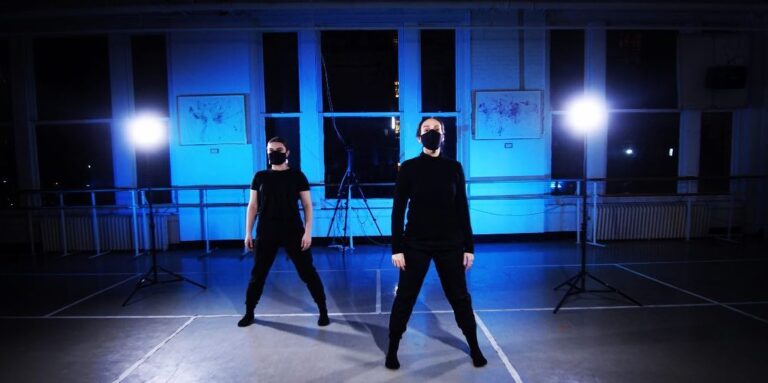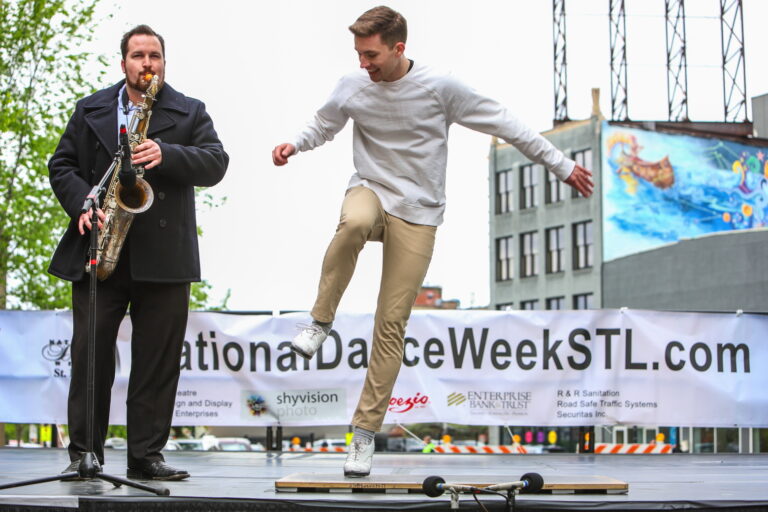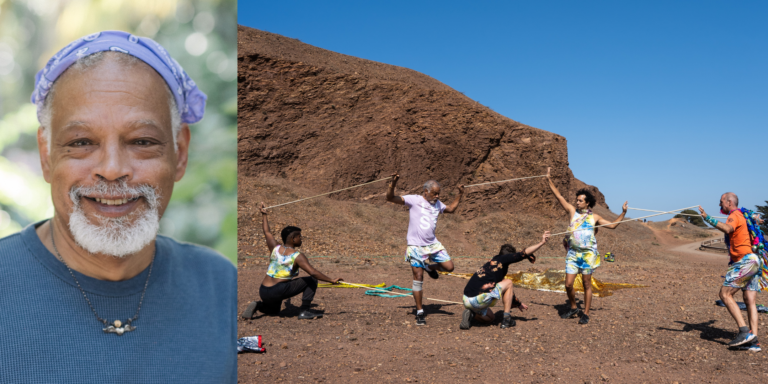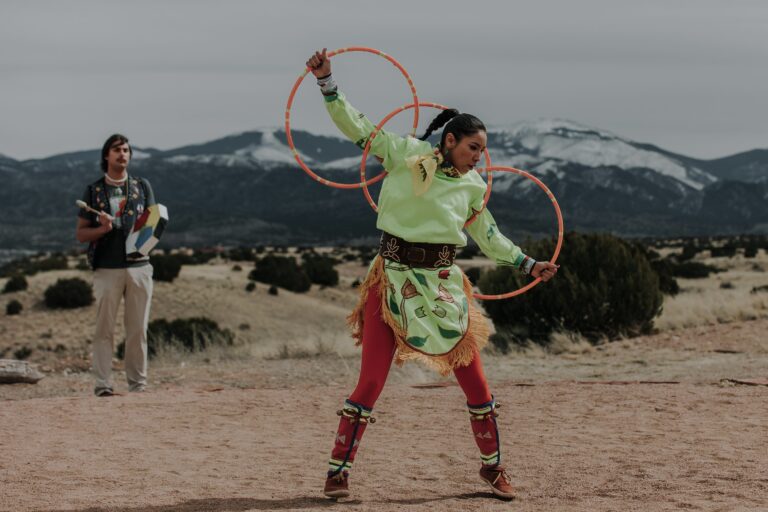How I teach pas de deux
Charles Askegard coaching Ballet Academy East students Marisa Trapani and Alexandros Pappajohn
The hall cutting through Ballet Academy East on a late Thursday afternoon is hectic. Students sprawl out in straddles, hovering over math homework, and parents peek through the windows to get a good look at their tots. But the air inside the advanced ballet class in studio five is calm, as is Charles Askegard’s demeanor. He is subtle, yet assured, a quality that carried his dancing during his years as a principal with the New York City Ballet.
Clarity of technique is Askegard’s priority at BAE, where he began teaching last fall, and it’s reflected in his to-the-point approach. “See this tendu? When you’re not so turned out here, you can get by. But when you bring it up here,” he says, lifting a student’s leg in a high à la seconde, “well, that’s not nice to look at.” Combinations throughout the level 8/9 class are short and square, and he’s extremely particular about hip alignment and how the soles and toes of the feet lie on the floor. “There’s so much you want to accomplish in your technique at the pre-professional age, but how much and how fast can students actually learn?” he asks. “I’m not saying to dumb it down, but succinct combinations let dancers really work on their technique. And it’s really important in building their confidence.”
Helping students break down their technique, says Askegard, has sparked curiosity in his own. “I’ve talked to others, and they all say, ‘When I started teaching, my technique got so much better than when I was dancing,’ because you have to be committed to doing it the right way to teach others,” he says. “Teaching is a new adventure, and I’m learning a lot.”
Askegard’s goal is to codify a class syllabus for pas de deux—a skill often praised by critics, as well as his own partners, during his performance career—for both himself and BAE. “Often when students start partnering, the girl is just thrown at the guy, and it’s like ‘OK, go.’ And that’s because many schools don’t have the ability to make a full partnering class viable. But it results in a deer-in-headlights level of fear. Try to squeeze 10–15 minutes into pointe class for some pirouettes and promenades,” he says. “When I was a student, I was the only guy to partner with. And I learned a lot about partnering when I was forced to dance with a girl a foot taller than me.”
Here, Askegard guides BAE students Marisa Trapani and Alexandros Pappajohn through partnered pirouettes:
Charles Askegard began studying ballet at Minnesota Dance Theatre and School (now The Dance Institute) under the direction of Loyce Houlton. At 16, he moved to New York City, where he trained with Maggie Black. He joined American Ballet Theatre in 1987 and became a soloist before leaving to dance with the New York City Ballet, where he remained for 14 years. As a principal there, he originated roles in ballets by Christopher Wheeldon and Peter Martins. Upon his retirement in 2011, Askegard co-founded Ballet Next, a project-based ballet troupe, with former ABT principal Michele Wiles. He has been a guest faculty member at the School of American Ballet and has taught company class for NYCB and Armitage Gone! Dance. Askegard joined BAE’s faculty full-time in fall 2012.
Marisa Trapani and Alexandros Pappajohn, both 15, are students in Ballet Academy East’s Pre-Professional Division.
Photo by Matthew Murphy



